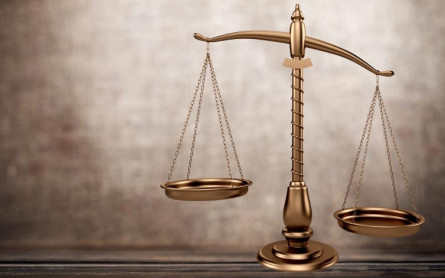KiwiSaver



Planning & budgeting
Saving & investing
KiwiSaver
Tackling debt
Protecting wealth
Retirement
Home buying
Life events
Setting goals
Money tracking
Plan your spending with a budget
Getting advice
Studying
Get better with money
What pūtea beliefs do you have?
How to save your money
How to start investing
Find a financial adviser to help you invest
Your investment profile
Compound interest
Net worth
Types of investments
Term deposits
Bonds
Investment funds
Shares
Property investment
How KiwiSaver works and why it's worth joining
How to pick the right KiwiSaver fund
Make the most of KiwiSaver and grow your balance
How KiwiSaver can help you get into your first home
Applying for a KiwiSaver hardship withdrawal
How to use buy now pay later
Before borrowing
How to get out of debt quickly
Credit reports
Know your rights
Pros and cons of debt consolidation
Credit cards
Car loans
Personal loans
Hire purchase
Student loans
Getting a fine
What happens if I start to struggle with moni?
How to protect yourself from fraud and being scammed
About insurance
Insurance types
Insuring ourselves
Wills
Enduring powers of attorney
Family trusts
Insuring our homes
Losing a partner
Redundancy
Serious diagnosis
How to cope with the aftermath of fraud
Separation
About NZ Super
This year's NZ Super rates
When you’re thinking of living in a retirement village
How to plan, save and invest for retirement
Manage your money in retirement
Find housing options in retirement
Planning & budgeting
Saving & investing
KiwiSaver
Tackling debt
Protecting wealth
Retirement
Home buying

KiwiSaver

Budgeting

KiwiSaver

Budgeting

Women

Women

Women

Budgeting


Resources
Help with the cost of living
Just wondering
In need of financial help
Booklets
Glossary
Videos
Blogs
View all
28 July 2015
Reading time: 3 minutes
Posted
by
Tom Hartmann
, 0 Comments

I hear this all too often: people joining a certain KiwiSaver scheme in order to see all their balances in the same place.
Admittedly it’s convenient, but unfortunately it’s not really great in terms of criteria to choose the right fund for you.
Your KiwiSaver account is actually fundamentally different from any other savings accounts you have. You are indeed setting money aside for your future, but in many ways KiwiSaver is a misnomer – there’s a lot more going on than just saving.
Remember that you’re an investor: you’re handing your money to a fund manager to buy assets, with the aim that these will hopefully increase in value over time. And because it’s an investment fund, depending on the mix of assets you’ve invested in, your balance won’t always go up. It can also go down.
Experts call this a market “correction”: confident investors drive prices of shares and property up and up, but then a bubble bursts and values come crashing down before eventually heading up again. These are the typical ups and downs you experience in investing, but if you’ve got a decade or more before you need the money, like for retirement, you can afford to ride out these highs and lows to gain more in the long run.
But if you’re watching your KiwiSaver balance devotedly as it plays out, you could get a bit sick to your stomach as you ride that rollercoaster.
And if you panic and bail out of your fund to a more conservative one because of a market crash, you cement in your losses and make it much more difficult for your finances to recover. That’s a bigger worry.
Here’s an example to bring this to life. Let’s say in five years’ time you've got a KiwiSaver balance of $150,000 in a growth fund. Suddenly it tanks 21%, so your balance drops to $120,000. It feels like you’ve “lost” $30,000, so you call your provider in a panic and change to a conservative fund so that you never feel that way again.
When the market recovers, though, your old growth fund gets back to $150,000 after just 40 months and keeps heading upward.
But how long does it take your new conservative fund to get back to $150,000? It will take 51 months instead of just 40, and by then your old growth fund will have grown to $160,000 without you. That’s when you’ve really lost money.
Because we all hate to lose even more than we like to win, this is one case where ignorance can indeed bring bliss – you might be better off not checking your balance too regularly.
My Money Sorted: Jaelyn
1 Comment
5 steps to get your $521
1 Comment
Who’s teaching your daughter (or niece, or granddaughter) about money?
1 Comment
My Money Sorted: Hilary Barry
2 Comments
My Money Sorted: Ben
3 Comments
My Money Sorted: Daniel
1 Comment

Use verification code from your authenticator app. How to use authenticator apps.
Code is invalid. Please try again
Don't have an account? Sign up
Or log in with our social media platforms


A Sorted account gives you a personal dashboard where you can save your tools, track your progress and you'll also receive helpful money tips and guidance straight to your inbox.



Comments (0)
Comments
No one has commented on this page yet.
RSS feed for comments on this page | RSS feed for all comments